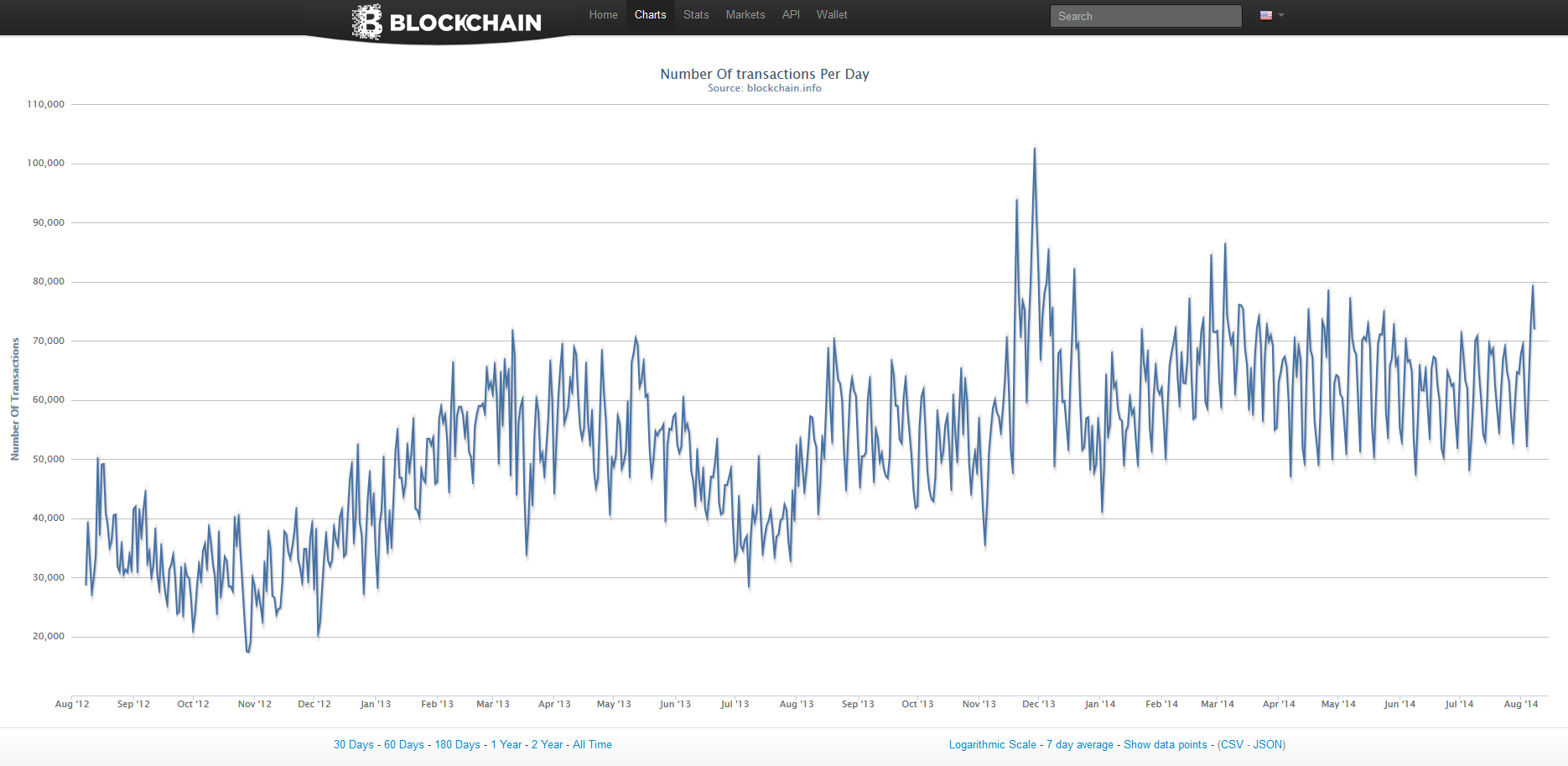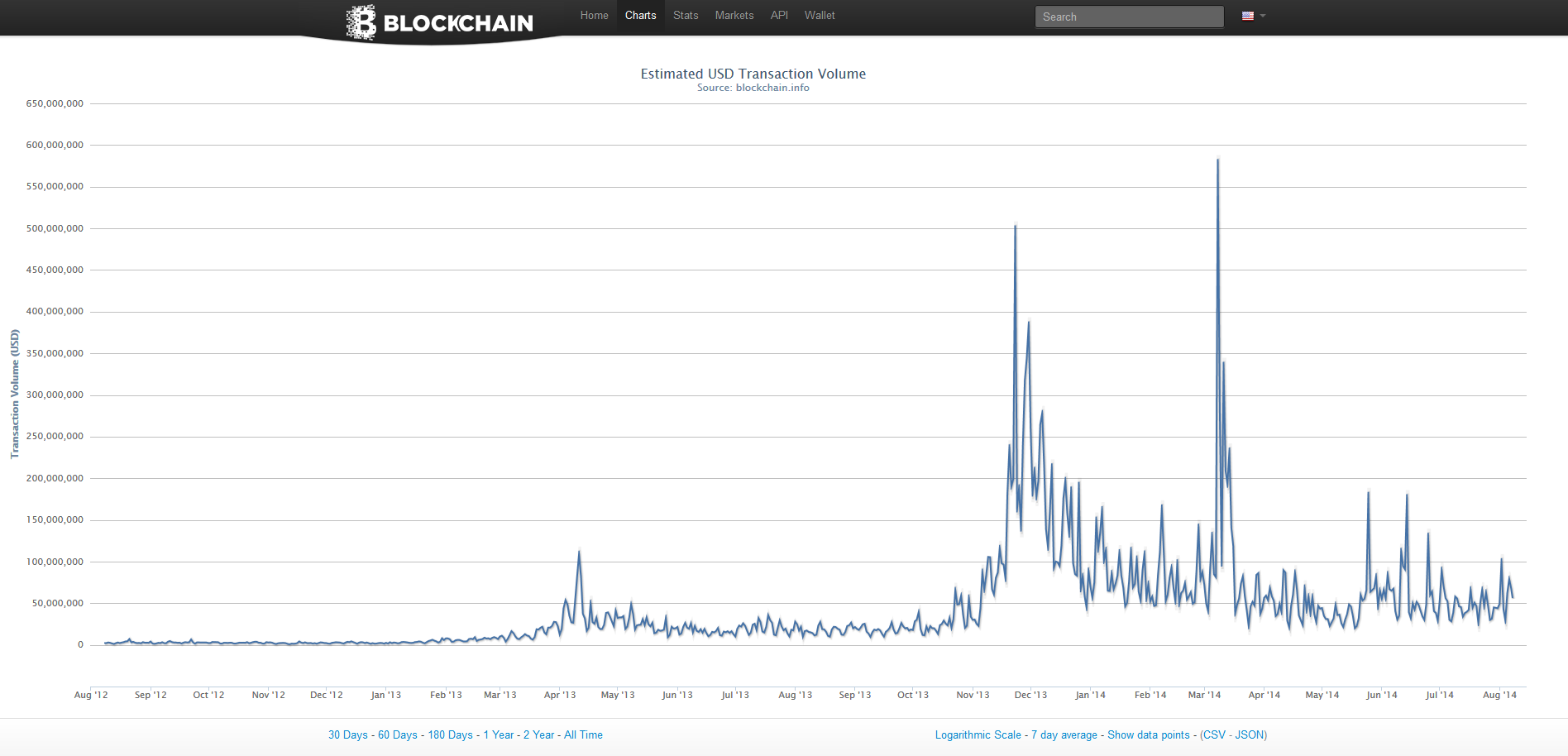In a fun coincidence, two traditional British media outlets have stories this week that seek to analyze trade volume and price fluctuation in Bitcoin.
First up is The Telegraph, which reported Tuesday that Bitcoin’s elevated price has dissuaded new investors and sent transaction levels “crumbling” back to 2012 levels.
“Widely touted as a rival to traditional state-issued currencies, cryptocurrencies such as Bitcoin became increasingly popular late last year,” the piece reads.
“Prices then hit their current high, trading briefly above $1,000 per bitcoin. While values are now more stable, volume seems to have been falling off a cliff.”
The piece goes on to cite Preston Byrne, director of the distributed autonomous organizations project Eris, and drawing the following conclusion: “As such, daily transaction volumes have slumped, falling to levels typical for 2012 — when Bitcoin was relatively unknown.”
Where that information comes from is a mystery (at least to me — please correct me if I’m wrong).
Charts from Blockchain.info clearly show a gradual increase in the daily number of BTC transactions over the last two years, and average daily transaction volume (in USD) is close to twice what it was a year ago and 10 times what it was two years ago.


The piece then reports that the majority of Bitcoins in existence go un-transacted:
“Mr Byrne says that Bitcoin’s trading volume to date has consistently represented a very small number of the total tokens outstanding — some estimates place it at less than 1% of bitcoins in existence.
“A study published last December — ‘A Fistful of Bitcoins: Characterizing Payments Among Men with No Names’ — estimated that 64 to 75% of the dominant cryptocurrency has never been spent.”
The BBC: Search data correlates with BTC price crashes
The BBC then reported Wednesday on a study recently published in the Journal of the Royal Society Interface that concludes a couple of feedback loops lead to a rise in the exchange value of Bitcoin.
The study, “The digital traces of bubbles: feedback cycles between socio-economic signals in the Bitcoin economy,” carried out by researchers at ETH Zurich, highlights two key ideas, according to the BBC’s reporting:
- “The first ‘reinforcement cycle’ involves an increase in the amount of searching for information about bitcoins, which leads to more chatter about the currency and prompts a rise in its value.”
- “The second feedback loop involves a rise in search volume which makes more people download the software and join in the mining pools that generate coins. This too tends to lead to a rise in the nominal value of bitcoins.”
Quartz’s Zachary Seward found something similar back in March 2013, when he noted a rise Bitcoin tweets coincided with a rise in the currency’s value.

So, should speculative Bitcoin investors stay glued to their RSS feeds and Google Trends alerts? Not quite, the piece says.
"’Our analysis suggests that the successive waves of growth of the Bitcoin economy were driven by corresponding waves of new users from public circles gradually opening to the currency,’" wrote the researchers.
“In addition, they found that search spikes were early indicators of an imminent drop in its value but added that this did not act as a good predictor of the biggest falls in the value of bitcoins.”
For a better understanding about BTC price charts and fluctuations and, check out our weekly price analysis segment here.

Did you enjoy this article? You may also be interested in reading these ones:
- BTC to break $2,000 mark by Christmas – Experts
-
What Do You Think the Exact USD-BTC Rate Will be at Christmas?
Do you want to read Cointelegraph from your mobile device? Then go to our Indiegogo campaign, contribute, collect your prize and enjoy the mobile app!
